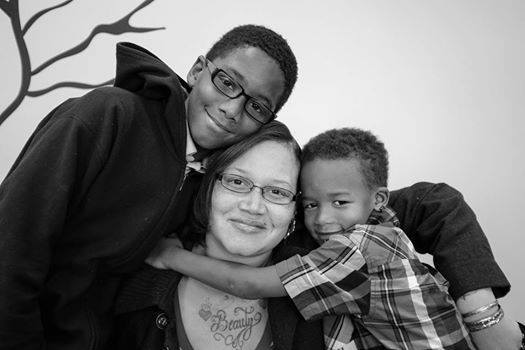By Melanie Blow, CPS Partnership Community
 It?s been twenty years since the Centers for Disease Control discovered that childhood trauma, like abuse or neglect, dramatically increased survivors chances of dying of 7 of America?s 10 leading causes of death.
It?s been twenty years since the Centers for Disease Control discovered that childhood trauma, like abuse or neglect, dramatically increased survivors chances of dying of 7 of America?s 10 leading causes of death.
The Adverse Childhood Experiences study demonstrated that children who survive any type of abuse (physical, emotional, sexual), experience neglect (physical or emotional), witness domestic violence, depend on an addicted or severely mentally ill caregiver, experience a parent?s incarceration, or endure parental divorce, abandonment or death are more likely to experience impaired mental health, physical health, financial health and social health throughout their lifespan.
These traumas cause so much fear and stress that children’s cells, brains and organs make adaptations that help with short-term survival but sacrifice long-term survival in the process. This results in brains more focused on how a teacher is moving or the tone of their voice than in what they are teaching. It results in brains so neurochemically different that happiness or peace is unlikely to come as often as it should without some medication; either prescription or of the illegal variety. And it results in children growing into adults who relate differently to people than their healthy peers do, in a many subtle ways.
And this leads to some of the most baffling findings of the ACE study. The higher a woman?s ACE score, the more likely she is to be raped as an adult. The more likely she is to be a victim of domestic violence (the higher a man?s score, the more likely he is to perpetuate domestic violence). The more likely victims of either sex are to experience serious financial hardship. These consequences of trauma blaze a clear path for its transmission to the next generation. And indeed, researchers have found that babies have ACE scores similar to their mothers within their first few months of life.
The ACE research proves that our earliest relationships lay the groundwork for our later relationships with people and with the institutions and features of our society. But by the time the first round of ACE research was published, research on how to break the cycle of intergenerational trauma was already old. Research that started in Elmira NY and was later replicated across the country proved that mothers who had survived abuse, developed negative coping mechanisms, and sunk into poverty could extricate themselves with intensive, relationship-based help.
Most importantly, this relationship-based help protects their children and stops the transmission of intergenerational trauma. These programs, collectively known as Maternal Home Visiting programs, have decades worth of evidence demonstrating that they prevent child abuse and neglect from starting. They help mothers who have struggled with substance abuse achieve long-term sobriety, they help mothers leave abusive relationships, they reduce maternal poverty and even maternal mortality. They also save significant amounts of taxpayer money during the child?s first year of life, and those savings go from ?significant? to ?massive? over time.

A medication or vaccine that had health benefits to individuals and to society that are as significant as those of MHV programs would be hailed as a medical breakthrough and distributed en masse. But a program where a professional forms a healthy relationship with a client and helps that client form a healthy relationship with their child is viewed as a social service novelty; a fluffy little program to fund when there is extra money in the human services budget, and one that is denied to 90% of the willing and eligible mothers across the nation who could benefit from it.
Why?
Is it because patterns of poverty, violence and addiction is so entrenched in the current Domination system that we don?t want to open our minds to a new way of looking at them, even if doing so means reducing these things to previously unimaginable levels? Is it because we devalue the importance of caring, and of mothering and mothers at every turn, in every echelon of society? And perhaps most importantly, what will it take to change it?
Is childhood trauma, and the change in attitudes needed to prevent it, something that the values we embrace in Partnership Systems can successfully address? It seems like now is a good time to start answering that question.
_________________________
Melanie Blow, a survivor of incest, psychological abuse and a host of other childhood trauma, now uses her talents to prevent Adverse Childhood Experiences. After getting a Bachelors of Science in Biochemistry from SUNY Geneseo, Melanie worked for the American Red Cross Biomedical Services for 15 years. Melanie has experience organizing survivors and empowering them to discuss their abuse and advocate for social change. She is involved with the New York Coalition to Protect Children, the Rochester Regional Coalition Against Human Trafficking, the Rochester chapter of Love146, the legislative advocacy committee of the American Professional Society Against the Abuse of Children, and served on the Board of Directors for Prevent Child Abuse NY. Melanie has over a decade of legislative advocacy regarding children?s issues, and she has been published in newspapers, magazines and blogs all across the country. Contact Melanie: melaniehdblow@gmail.com





Thank you for writing, Melanie.
This is important, but I find it hard to believe that the impact upon a child of a clear and conscious divorce, particularly from an untenable situation to a better one, would be the same or even close as the impact of violent sexual assault on a child. They lump everything in together, does the data differentiate at all?
Michelle, I’m inclined to agree with you. The original study was done of people who were born in the 1930’s, 1940’s and 1950’s, so we’re talking about divorces that happened prior to the 1970’s. There was a lot of stigma on divorced parents then; it seems likely that maternal poverty after the divorce was a near guarantee, and it’s even possible that the divorce back then functioned as a proxy measure for abuse, addiction or mental illness that a child growing up in the home didn’t realize. Humans live a long time, so longitudinal studies are really difficult. It would be interesting to recreate the study with a cohort of adults who were born in the 90’s, when divorce was destigmatized and was often done in ways meant to minimize the impact on children. There would be less information about the rates of some diseases that the original study was able to capture, based on the age of the study participants, but there could still be some useful information. I’m not an expert on divorce research, but last I knew the evidence was starting to build that the impact of divorce can me minimized for children, hopefully to the point that it doesn’t rise to the level of an ACE.